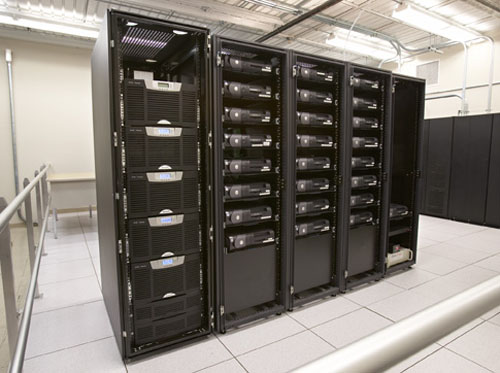In data centers, PDUs or power distribution units are used to disperse power evenly over the whole strip. In this case, we should make sure that our servers are equipped with proper power strip mounts and they could be placed behind mounting post or on vertically on the back. There are two types of power strips, intelligent and standard. Standard power strips comes with features that can provide us with a variety of valuable information, such as current output and fuse replacement indicator. These equipments should be managed properly on-site and in-person. On the other hand, intelligent power strips could provide us with remote power control and administrators should be able to perform cold server reboot of the devices and servers as well as troubleshooting problems from any location with any available Internet connection. This should help us to reuse server downtime and we will be able to get essential business capabilities back online. These intelligent solutions are not only offer additional controls, but administrators can take full advantage of the additional power management, such as 3-phase.

By supporting three-phase power data centers could have added flexibility, because not all countries offer single-phase power. In general, 3-phase power come with fewer circuits and it could make sure that power load will be much more balanced. The overall number of PDUs can be reduced as we require for more power equipments. We should be able to increase available amperage significantly. For example, we should make sure that our server racks are compatible if we need to use 20-amp or 64-amp circuits. In this case, 3-phase power can deliver more electricity to servers with fewer circuits. So, it is clear that 3-phase power could provide us with additional security when needed. Experts have estimated that costs of electricity will continue to rise and this could affect data centers significantly. Other things that we need to consider are that we have the right number of outlets and we could meet the receptacle and plug requirements. It is essential that we could have the right kind of redundancy requirements when needed.
Power usage directly correlates with cooling, Power generates heat, but it could also transfer heat to other areas by providing cooling systems. The type of rack we choose could decide what kind of cooling solutions we need. The base heat output could be determined by the type of rack that we have in our data center. Depending on design of the rack, we could save the power needed to cool these servers from 4kW to 12kW each day. High-density data centers will generate more heat and require more intensive cooling system and this is the reason why proper rack design is needed. For example, server racks should have full perforated side, top and bottom panels to ensure improved air circulation. Some high performance servers are equipped with liquid cooling units and they will need special types of racks. Racks are generally essential, so we need to choose them carefully.










Comments are closed.